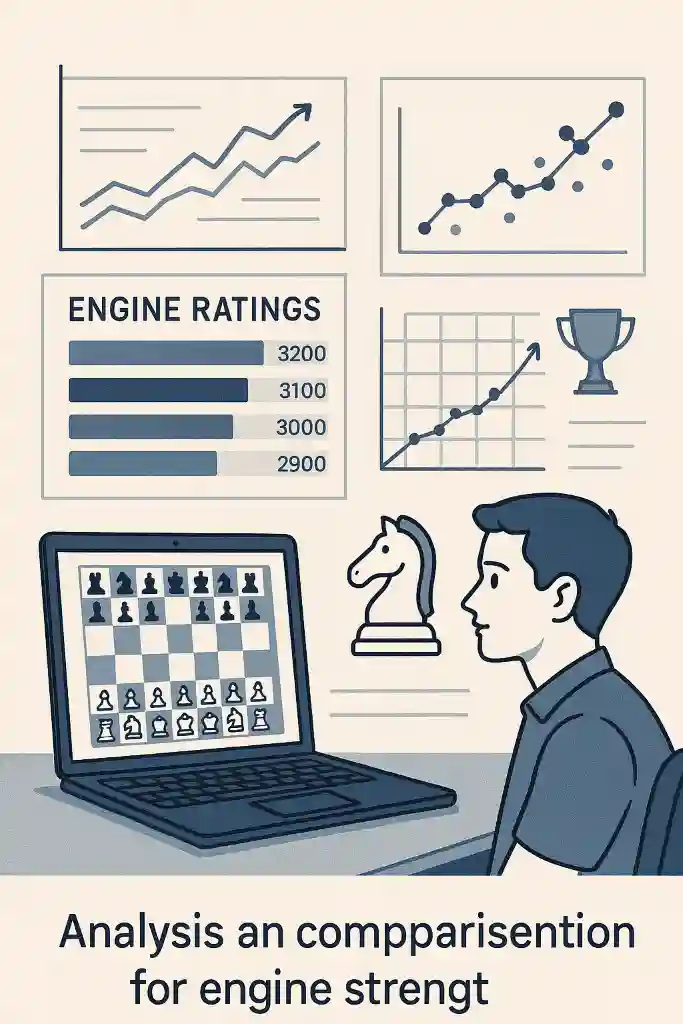Rating List Chess Engines
1. Introduction
Chess engines have long been a subject of research and fascination within the artificial intelligence and game theory communities. The rapid improvement in algorithmic efficiency and computational power has transformed engines into formidable opponents. Rating lists, such as those maintained by CCRL (Computer Chess Rating Lists) [1], provide a standardized method for evaluating the strength of these engines. In contrast, encyclopedic sources such as Wikipedia [2] offer a historical overview and technical background, including algorithmic improvements and machine learning techniques that have driven engine development.
2. Methodology of Rating Lists
2.1 Data Collection and Testing Environments
Rating lists such as the CCRL employ extensive automated tournaments where chess engines compete in controlled environments. These tests are designed to ensure uniformity in hardware and time controls, which is crucial for eliminating external biases. Typically, engines are evaluated on parameters such as move selection, depth of analysis, and overall strategic efficiency. The tests often include thousands of games, ensuring statistical significance in the ratings.
2.2 Rating Algorithms and Metrics
The rating systems used for chess engines are adaptations of those originally developed for human competition, such as the Elo rating system. These algorithms calculate the relative strengths of engines by comparing expected outcomes to actual results. Adjustments are often made to account for the deterministic nature of engine play and the influence of factors like opening book choices and endgame tablebases.
2.3 Testing Challenges and Considerations
Ensuring fair comparisons across diverse engines involves several challenges. Engines vary widely in their evaluation functions, search algorithms, and hardware optimization. Discrepancies in hardware performance can skew results, hence the emphasis on standardized testing conditions. Moreover, the ever-evolving landscape of chess engine development necessitates frequent updates to the rating methodologies to accommodate new innovations such as neural network-based evaluation methods.

3. Implications for Engine Development and Competitive Play
The detailed analysis of engine ratings provides significant insights for developers. Understanding how different engines perform under standardized conditions can guide further improvements in algorithm design. For example, engines that excel in deep tactical calculations may inspire others to refine their evaluation functions to better manage complex positions. Furthermore, rating lists contribute to the competitive environment by fostering a transparent metric for engine performance, thereby encouraging innovation through direct comparison.
In competitive play, these ratings offer enthusiasts and professionals alike a means to benchmark engine strength. As chess engines continue to surpass human performance, rating lists have become essential tools for researchers who aim to push the boundaries of artificial intelligence and game theory.
4. Discussion and Future Directions
The current methodologies for rating chess engines, while robust, are not without limitations. Future research may focus on integrating more dynamic models that better capture the non-linear progressions seen in engine development. Additionally, the rise of hybrid approaches—combining traditional search methods with neural network evaluations—poses new challenges for the standardization of rating systems.
Expanding the scope of ratings to include specialized tests (e.g., performance in specific types of endgames or under unconventional time controls) may provide a more granular view of engine capabilities. The potential for machine learning to continuously adapt and refine rating algorithms represents an exciting frontier in the evaluation of chess engines.
5. Conclusion
Rating lists, such as those maintained by CCRL, play a pivotal role in the assessment and advancement of chess engines. Through controlled testing environments and refined rating algorithms, these lists offer a standardized and transparent measure of engine performance. As both hardware and software continue to evolve, the methodologies behind these ratings will need to adapt, ensuring that they remain relevant and reflective of true engine capabilities.
References
- CCRL Computer Chess Rating Lists. Retrieved from https://computerchess.org.uk/ccrl/4040/about.html.
- Wikipedia, Chess Engine. Retrieved from https://en.wikipedia.org/wiki/Chess_engine.

Jorge Ruiz Centelles
Filólogo y amante de la antropología social africana
